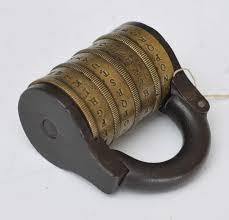Open the lock

A letter lock consists of 5 different letters from the first 11 letters of English alphabet. A lock will open if any three letters match with the original code (so the order of the letters is irrelevant). What is the minimum number of tries in which you can surely open the lock?
The answer is 5.
This section requires Javascript.
You are seeing this because something didn't load right. We suggest you, (a) try
refreshing the page, (b) enabling javascript if it is disabled on your browser and,
finally, (c)
loading the
non-javascript version of this page
. We're sorry about the hassle.
Let the options be the numbers 1 to 11. Firstly, we'll try the first 5 numbers, i.e. 1 to 5. If this does not open the lock, then we know that there can be at most 2 correct numbers within this set. Then we try the next 5, and if this doesn't open the lock, we can again extrapolate that there can be at most 2 correct numbers within the set 6 - 10. Therefore, after 2 turns, we are certain that the final, untried number is one of the required numbers. For the purpose of our example, this is the number 11.
So we try the set 7 to 11, and if this doesn't work, then we know that there is only one correct number between 7 and 10, and that 6 is also definitely a correct number. This is gleaned after our third try.
So then we try 11, 5, and any other three numbers from the set 7-10. If this fails, then we know that the last correct number was actually the one we just removed. So for example, if we had just tried 11,5, 7, 8, and 9, we'd know that the missing number, 10, was actually one of the 3 required to open the lock. So after the 4th attempt, we know 3 of the 5 valid digits with certainty, and can proceed to open the lock on our fifth try.
Therefore, the minimum number of attempts to open the lock = 5